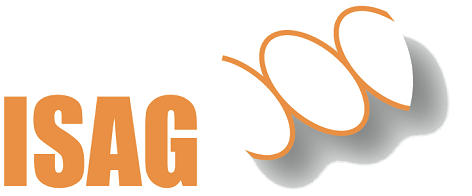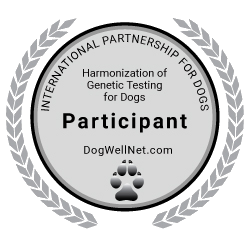Disproportionierter Zwergwuchs
A variant of the PRKG2 gene has been found in the breed Dogo Argentino, which leads to... more
Disease
A variant of the PRKG2 gene has been found in the breed Dogo Argentino, which leads to disproportionate dwarfism. The PRKG2 gene encodes for a protein which has a signalling role in the termination of chondrocyte proliferation and initiation of the differentiation into bone tissue. At the age of 2 months, skeletal abnormalities become visible in affected puppies. Affected dogs have a shorter height and body length. They show clinical signs like a disproportionally large head as well as forelimb angular aberrations (carpus valgus) that can cause gait abnormalities. The radiographic examinations indicate an asynchrony of growth between the radius and ulna, causing humeroulnar incongruity. The radiograph shows an insufficient calcification at the growth plate during bone formation. One case showed signs of hip dysplasia and moderate muscle atrophy at the age of 10 months. Adolescent dogs show short legs and proportionally shorter bodies and necks as well as a relatively broad faced head, a slightly upward-faced nose and a pronounced vertical hollow groove between the eyes.
A variant in the PCYT1A gene has been found in the breed Magyar Vizsla, which leads to disproportionate dwarfism (SD3) and is inherited in an autosomal recessive manner. PCYT1A catalyses the biosynthesis of phosphatidylcholines, which is part of the cell membranes but also plays a role in formation of vesicle membranes. These vesicles are important for the mineralization of the endochondral bone tissue. Affected puppies are not visibly distinguishable from their unaffected littermates at birth, but the differences become more obvious at the age between 3 to 5 weeks. The phenotype is predominantly characterized by a shortening and deformation of the humerus and femur, but other long bones are also altered. Affected puppies develop shorter and more bowed limbs than their littermates and a knobby appearance of the carpi. There is marked shortening of the brachium, an abducted elbow position and shortening and bowing of the antebrachium with thickening in the region of the metaphysis. Affected individuals maintained a wide-based stance in the forelimbs. The hindlimbs were similarly shortened but not as severely shortened as the forelimbs. There is some variability in the severity of symptoms.
A variant in the PCYT1A gene has been found in the breed Magyar Vizsla, which leads to disproportionate dwarfism (SD3) and is inherited in an autosomal recessive manner. PCYT1A catalyses the biosynthesis of phosphatidylcholines, which is part of the cell membranes but also plays a role in formation of vesicle membranes. These vesicles are important for the mineralization of the endochondral bone tissue. Affected puppies are not visibly distinguishable from their unaffected littermates at birth, but the differences become more obvious at the age between 3 to 5 weeks. The phenotype is predominantly characterized by a shortening and deformation of the humerus and femur, but other long bones are also altered. Affected puppies develop shorter and more bowed limbs than their littermates and a knobby appearance of the carpi. There is marked shortening of the brachium, an abducted elbow position and shortening and bowing of the antebrachium with thickening in the region of the metaphysis. Affected individuals maintained a wide-based stance in the forelimbs. The hindlimbs were similarly shortened but not as severely shortened as the forelimbs. There is some variability in the severity of symptoms.
Breed
Dogo Argentino,
Magyar Vizsla
Heredity
autosomal recessive
Test duration
1-2 weeks after arrival of the sample in the lab


